What Is The Output Impedance And Why Do I Even Care About It?
The output impedance or source impedance Ri of a perfect signal source is 0Ω. When talking about DC voltage sources it is also called internal resistance (That’s why I call it Ri even though a guitar pickup is an AC signal source). A (passive) guitar pickup is by no means a perfect signal source (Ri > 0Ω). This means that the output voltage will drop when connected to a load (effects pedals, amplifier). This effect will be more significant the higher the output impedance of your guitar pickup and the lower the input impedance of your amplifier/effects pedal is (voltage divider between Ri and RL).
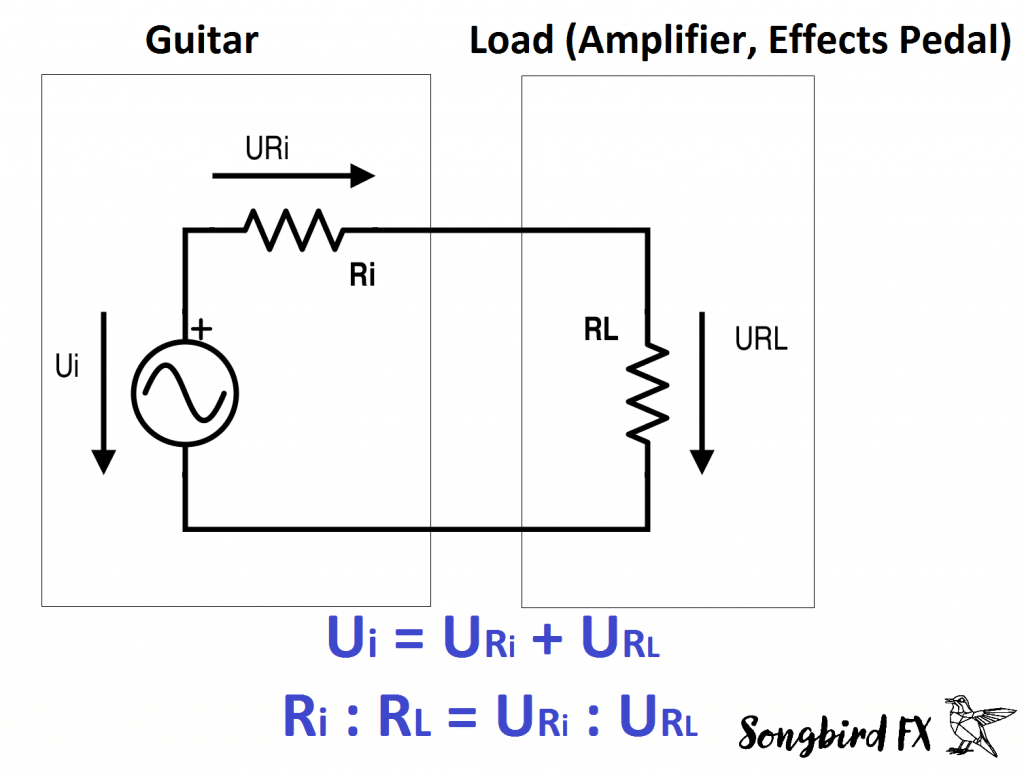
Recently I simulated the circuit of a Fuzz Face with LTspiceIV and realized that the output impedance of the guitar affects the final output waveform of the effects pedal.
Example:
Fuzz Face Schematic:
Output Waveform Of A Fuzz Face With Perfect Signal Source (Ri=0Ω) At Input:
Output Waveform Of A Fuzz Face With Realistic Signal Source (Ri=10kΩ) At Input:
You have to find out for yourself if you like the sound of those interactions or not. If you don’t like it you should reconsider the order in which your guitar effects are arranged in your signal chain. Buffer and booster/preamp pedals have a high input and a low output impedance. They can be used to preserve the original waveform coming from your guitar pickups when used as the first pedal in your signal chain. Active guitar pickups are even better than buffer pedals because the guitar cable is a (capacitive) load too.
How To Measure The Output Impedance Of Your Guitar Pickup?
For measuring the source impedance of your guitar you will need an oscilloscope. If you don’t have one you can use my results because it won’t differ that much. By the way the exact model name of my guitar pickup is a Seymour Duncan SH-4 JB in bridge position.
- Measure The Peak-Peak Voltage With Open Output:
Turn your guitar up to full volume to make sure that the pots don’t influence your measurement. Then strum a note (I strummed the thicker E string).
- Measure The Peak-Peak Voltage With A Load (RL=1kΩ):
Strum the same note with the same intensity as before to get the best results.
- Calculate The Output Impedance Of Your Guitar Pickup:
Finally we can take the voltage divider formulas from above and substitute the variables with our measured values.
Result: The output impedance of my guitar is about 10kΩ.
Note: The impedance changes with frequency. This result is only true for the lower E-string, however we can assume that it won’t change dramatically. To get a more detailed result you can repeat this procedure at different frequencies (different notes).
USB Rechargeable Guitar Effects
Are you tired of low 9V batteries in your pedals? This is now over! My company Songbird FX invented the world’s first USB rechargeable Overdrive pedal, the Bluebird Drive. Below you find a video of the Germanium version, produced by the great Mike Hermans.
Interested? Click here for more information!
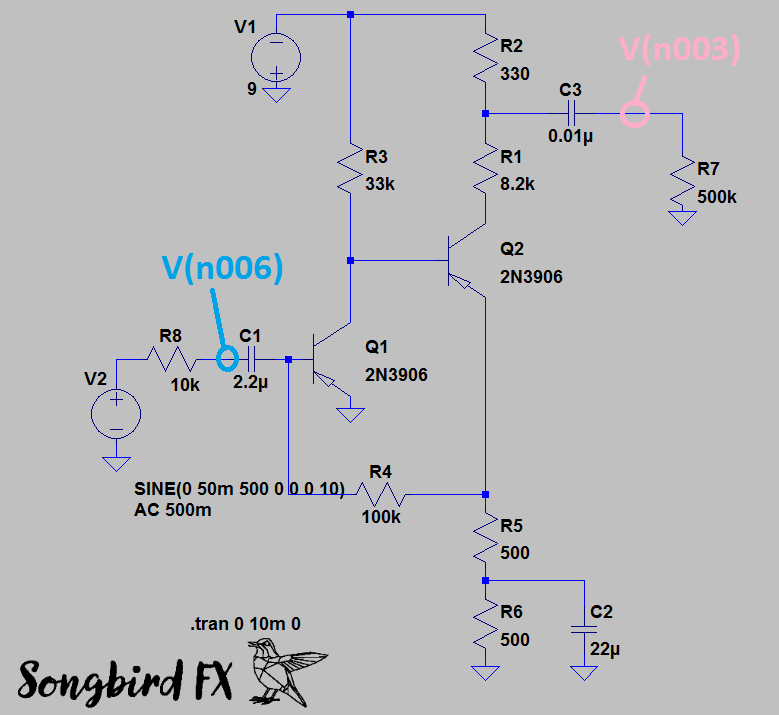
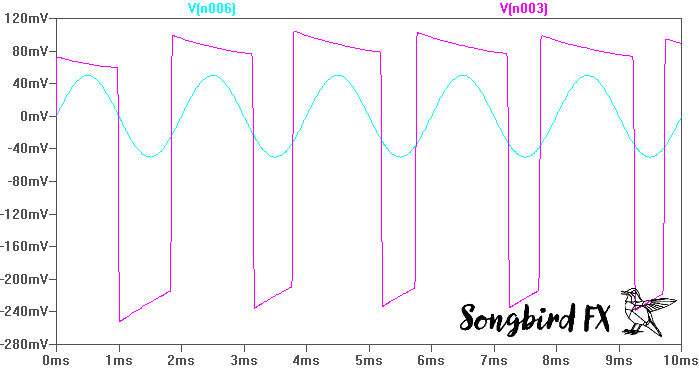
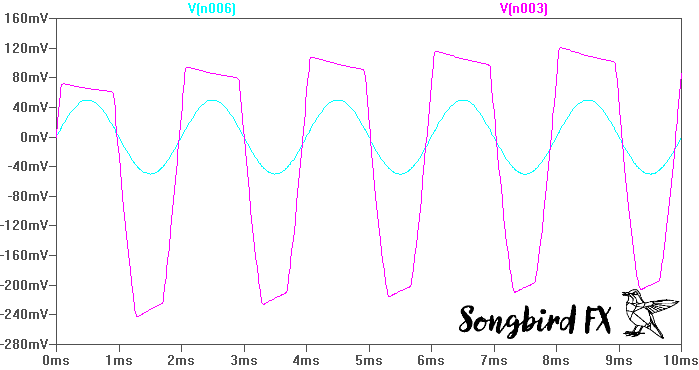
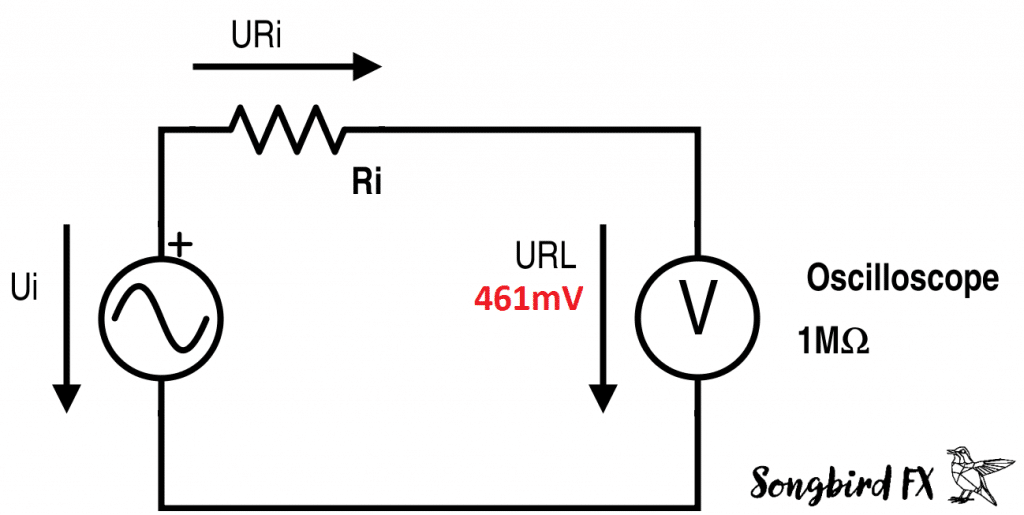
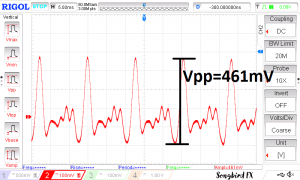
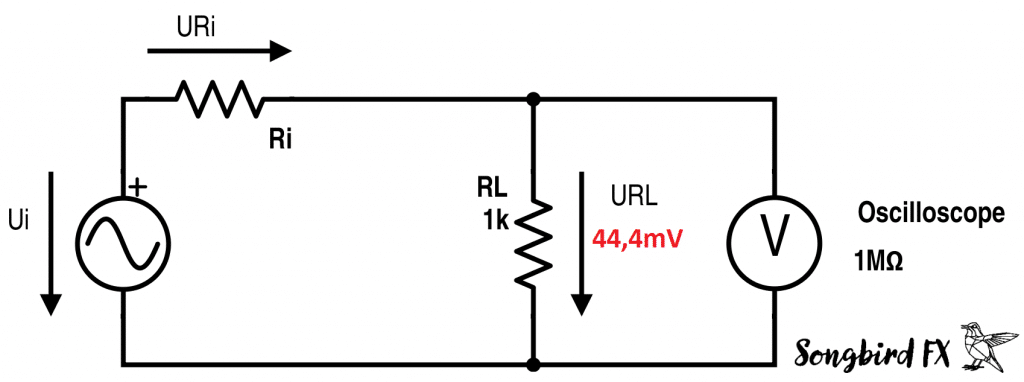
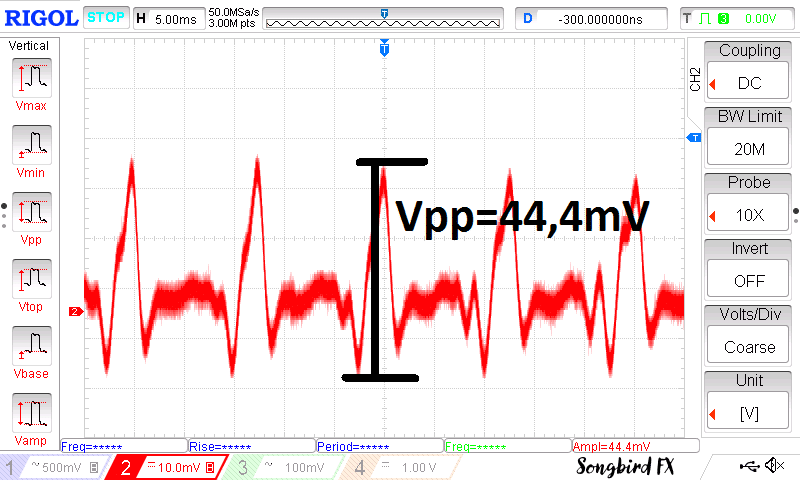
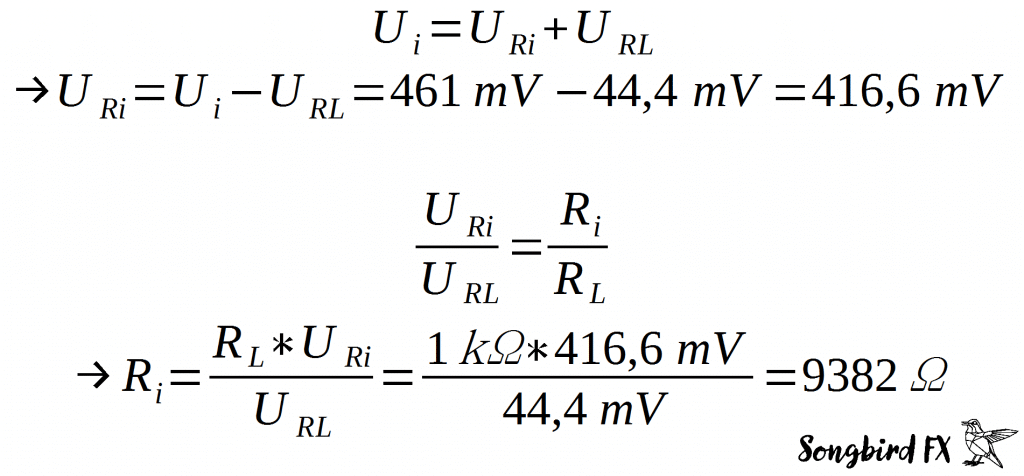
A more accurate way can be done with a signal generator, a voltmeter, and a resistor. Connect in series as follows:
SignalGen –> R –> Z –> gnd
Where:
R is a resistor of known value
Z is the pickup
Measure the voltage across R (call it V1)
Measure the voltage across Z (call it V2)
The current (I) through the circuit is equal to V1/R. The impedance of the pickup is equal to V2/I. Since I = V1/R we can do a little algebra to get:
Z = (V2/V1)*R
Repeat for multiple frequencies.
Great idea, thanks for sharing!